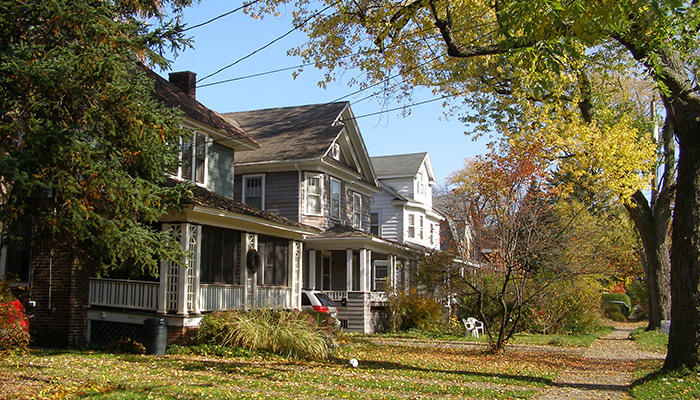Clarke Street is much admired in the neighborhood for its quite elegance. The effect is, however, as much due to the rows of lofty maple streets which line the street, though many of these have been removed in recent years. As for any stateliness of the Clarke Street homes; most were simply built for solidly middle-class Syracusans in the 1920s following fairly established and economical architectural types. Most of the houses on the street, however, remain owner occupied and well cared-for.
As much as any street in the neighborhood, Clarke Street emphasizes the urban qualities of the “gridded garden,” and also shows shifts in contemporary sensibilities. For the most part the small “postage stamp” front lawns are connected and simply planted with grass, reflecting the orderly tastes predominate from the 1920s through the 1950s. No fences or separating hedges were originally intended, though a few of these now divide properties and interrupt the long vista of what otherwise could be considered a shared “village green.” Houses all share the same set back from the street and the transition from private to public space is clearly delineated from house, to front porch, to front yard, to continuous concrete sidewalk, to tree-lined berm to pave street – and then the process if reversed on the on the other side.
In recent years many simple green front yards have been replaced with more elaborate gardens. In spring and early summer the east end of Clarke Street is especially striking for the variety of its blooming flowers.
